 |
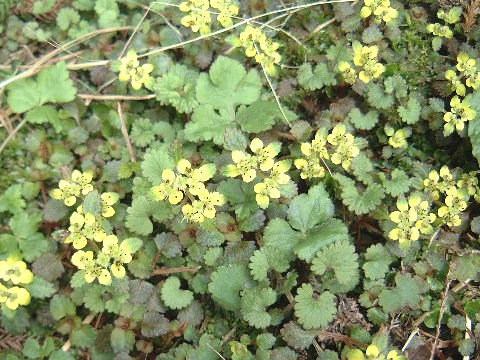

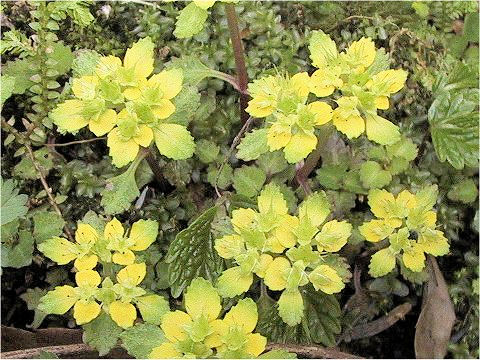

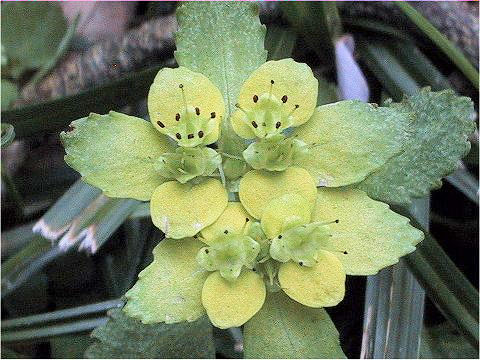

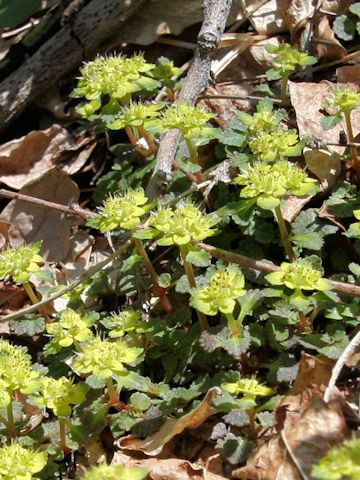

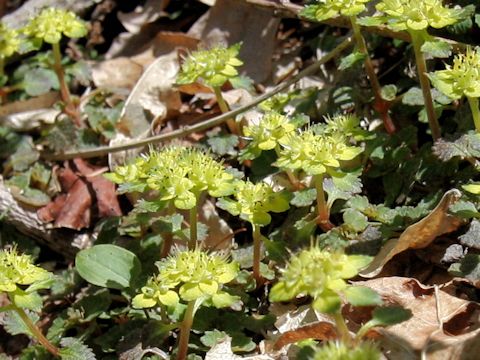

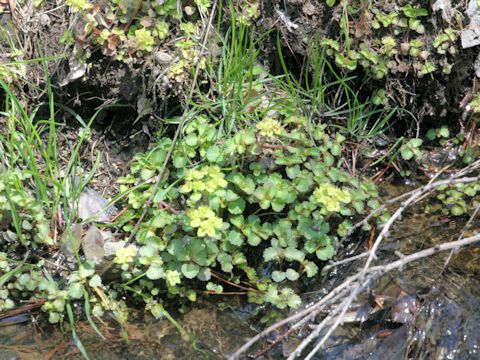

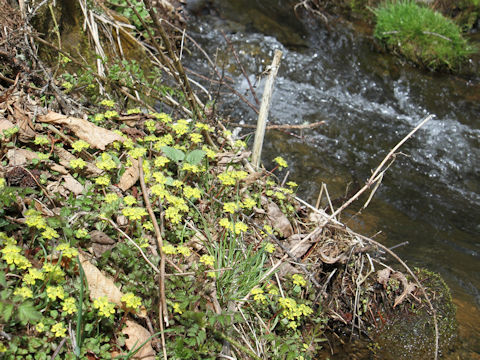

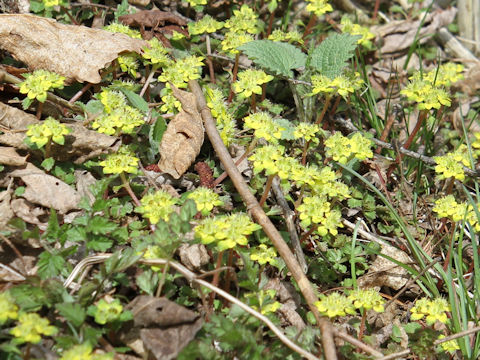

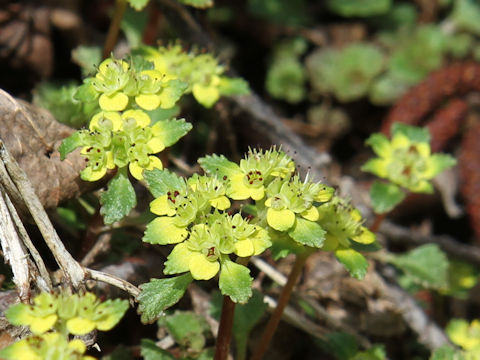

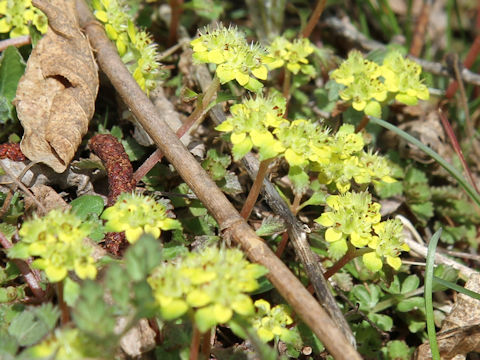

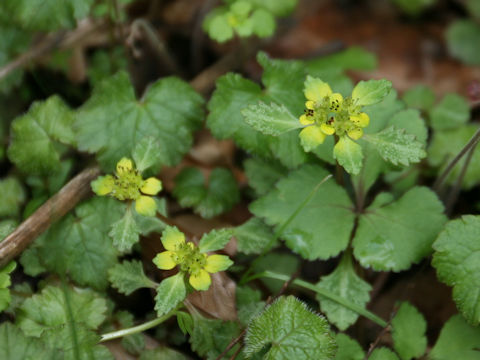

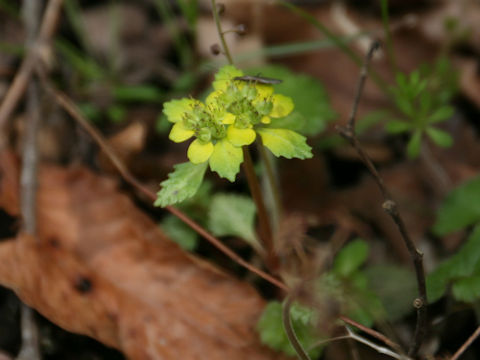

|

|
íªÌ{BAknûì©çnû̾½m¤ÉªzµÄ¢Ü·Bu¢íÚ½ñvÌÏíÅARnÌJ¢Ì¼nɶ¦A³ÍPOZ`ÙÇÉÈèÜ·BºÌtÍ~`AstÍ`Å·BS²ëAs¸ÉÔÙÌÈ¢Ôð穹ܷBäÓôÐÍÎF©ç©ÎFŽJµÜ·BYµ×ÍW èAäÞÍÃgF©çFÉÏ»µÜ·B
|

|
LmV^ÈlRm\E®Ì½NÅAw¼Í Chrysosplenium macrostemon var. shiobarenesBp¼Í èܹñB
|

|
"Nikko-nokonome" (Chrysosplenium macrostemon var. shiobarenes) belongs to Saxifragaceae (the Saxifrage family). It is a perennial herb that is a variety of "Iwa-botan" and distributed from southern Tohoku district to the Pacific Ocean side of Chubu district of Honshu in Japan. This herb grows in montane marshes along dales and can reach about 10 cm in height. The basal leaves are ovate-round and the cauline leaves are ovate. The apetalous flowers are borne on the stem apices in April. The calyces are mid green to yellowish green and spread out. The flower has eight stamens with dark magenta anthers. The anthers shade into black.
|

|
[ã] ·ì§ªJs©ÉÄA2006N0426úBeB(photo by Takao Ito)
[PEQ] ·ì§îªsÔäuõOvÉÄA2003N0427úBeB
[R`T] ·ì§´ºuªx©R¶»vÉÄA2013N0506úBeB
[U`X] ·ì§ìskRÉÄA2014N0504úBe
[POEº] {é§åäs¾æØëÉÄA2021N0418úBeB
|













